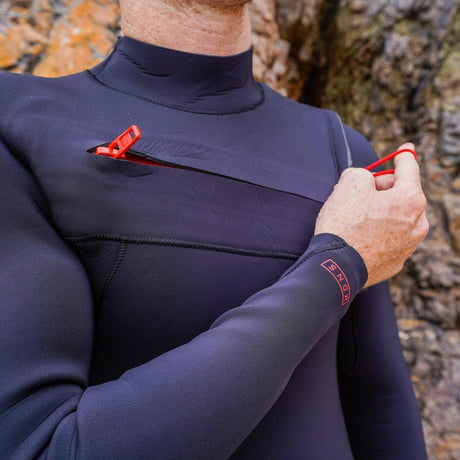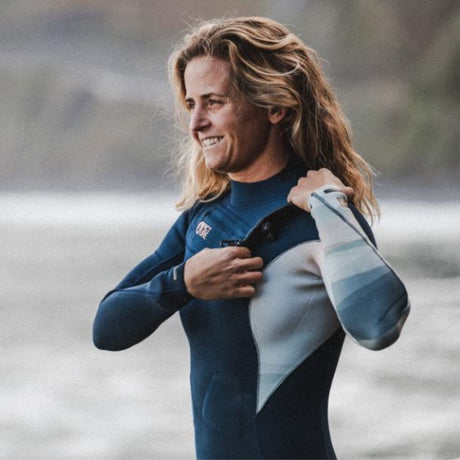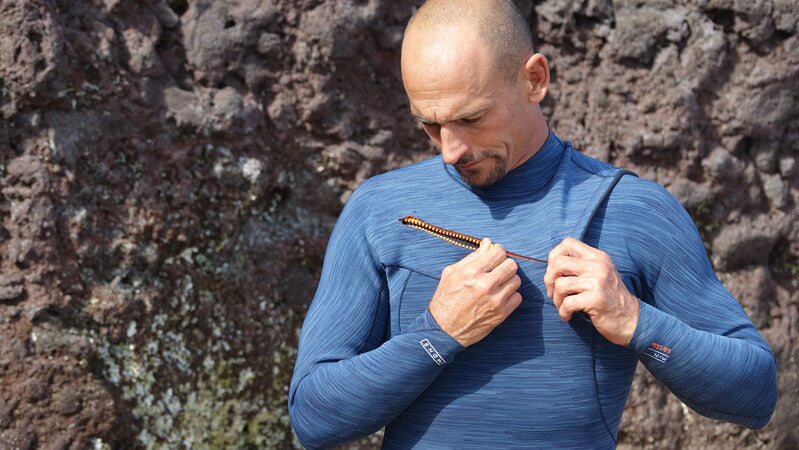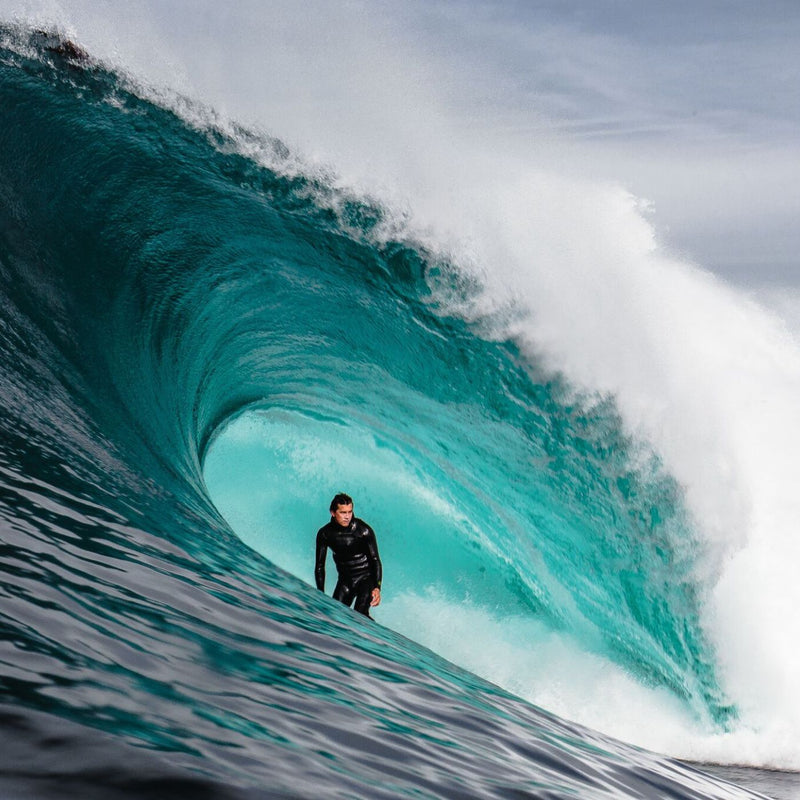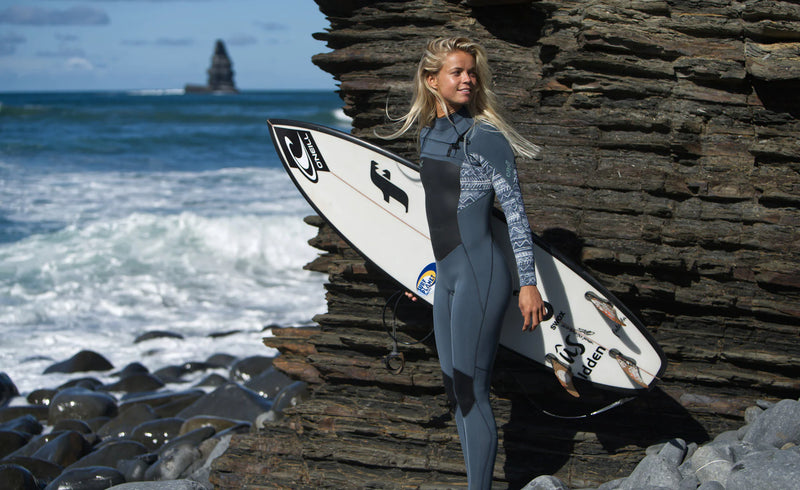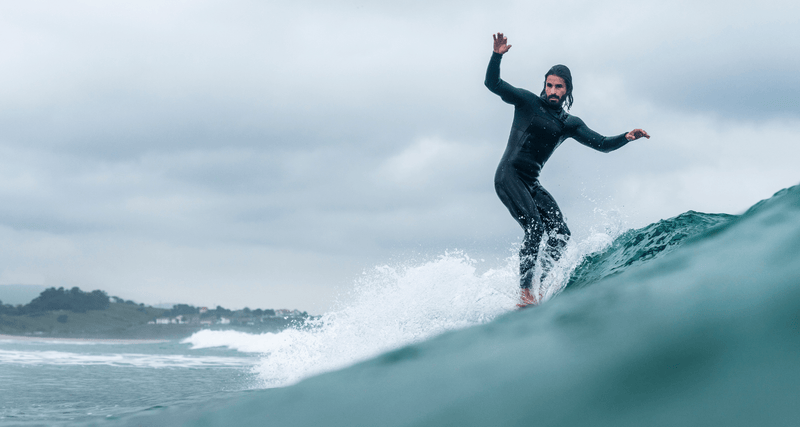When you start practicing surfing, whether you are a beginner or experienced, it is essential to have a neoprene wetsuit adapted to your different needs depending on the seasons. It is said to be the crucial piece that offers protection against the elements, thermal insulation, as well as freedom of movement allowing you to fully enjoy all your surf sessions. However, finding one that perfectly matches your needs depending on the brands, models, and features available on the market can be a real challenge. That is why we will guide you through the key elements to consider when purchasing your neoprene wetsuit. Here you will find valuable information on the different aspects to take into account, such as neoprene thickness, wetsuit style, cut, seams, and much more! So, whether you are looking to face the cold ocean waters or venture into the mildest climates of the globe in search of the best waves, the HawaiiSurf team provides you with advice and recommendations that will help you find THE ideal wetsuit that will perfectly fit your needs and desires.
So, ready to dive into the suit selection process? Dive into the following chapters to discover everything you need to know to make the perfect choice.
What is neoprene and why is it used in wetsuits?
Neoprene is a synthetic material used in the manufacture of wetsuits and other water sports clothing. It is made of chloroprene rubber, an elastic and thermal insulating polymer.
Here are the reasons why neoprene is widely used in surf suits:
- Thermal insulation: Neoprene is famous for its thermal insulation properties. Indeed, it traps a thin layer of water between the surfer's body and the material, creating a protective barrier against the cold. This layer of water is warmed by the surfer's body heat, forming an effective insulation that keeps the body warm even in the coldest waters.
- Flexibility and elasticity: Neoprene is an extremely flexible and elastic material, allowing great freedom of movement during surfing sessions. Neoprene wetsuits fit closely to the body, providing a comfortable fit without restricting movement. Surfers can then paddle and stand up on their board without restriction, improving their overall performance in the water.
- Abrasion resistance: Neoprene is also valued for its abrasion resistance. When you practice surfing or other water sports, you are in constant contact with water, boards, sand, and other elements that can cause friction and scratches. Quality neoprene suits are designed to withstand these harsh conditions, offering excellent durability as well as very good protection against scratches and cuts.
- Waterproofing: Neoprene is a waterproof material that prevents cold water from entering the suit. They are generally designed with glued and/or sewn seams that help reinforce the waterproofing. This helps maintain a stable body temperature by preventing water from seeping in while reducing the effects of wind.
- Lightness: Neoprene is a waterproof and lightweight material, which is essential for a comfortable surfing outing. Neoprene wetsuits are not bulky and do not restrict the surfer's movements. They provide a feeling of lightness and freedom, allowing surfers to focus on their performance without being hindered by heavy and cumbersome equipment.
Determine the surfing conditions
WATER TEMPERATURE AND SEASONS
Determining the surfing conditions based on water temperature and seasons is purely essential to best choose the appropriate surf suit. Indeed, since the water temperature can vary throughout the year, it is important to first understand how this can affect your experience in the water.
In general, as everywhere in the world, the warmest seasons, such as summer for example, can have pleasant water temperatures, while the cooler seasons like autumn and spring can sometimes present cooler temperatures depending on your location. Therefore, by monitoring weather forecasts and consulting local sources such as the WINDGURU website, you can estimate the water temperature, the periods, the knots, the wind direction, and many other possibilities in order to determine the thickness of your wetsuit.
Adjusting your choice of wetsuit according to the water temperature and seasons will allow you to fully enjoy the joys of surfing!
LOCAL CLIMATE AND WEATHER CONDITIONS
It is important to accurately determine the surfing conditions based on the local climate and weather conditions in order to plan the ideal day when you can fully enjoy it!
Indeed, the local climate and weather conditions can have a significant impact on the waves, wind, and water temperature! In some regions, windy climates can generate waves suitable for surfing, while in other places, a calmer climate will create gentler surfing conditions. Additionally, the wind can significantly affect the quality of the waves, due to offshore winds (coming from the land towards the sea) favoring cleaner waves.
So by monitoring local weather forecasts, you can obtain valuable information about the winds, temperatures, and wave trends, which will help you determine the best conditions to increase your chances of surfing the ideal wave!
WAVE TYPES
Waves are generally variable depending on:
- The size
- The management
- The shape
- The power
Some waves will be more suitable for beginner surfers, while others will be better suited for more experienced surfers. To give you an example, beach break waves (waves that form over sandy bottoms) are generally easier to surf and offer ideal sections for learning the first maneuvers and sensations on the board.
Reef break waves (which form over rocky bottoms) are more powerful and hollow, ideal for the most experienced surfers. By understanding the different characteristics of the waves and observing the conditions on site, you can assess whether the waves, wind direction, tide, and other factors play a decisive role in catching waves.
Once again, the size of the waves, the wind direction, the tides, and many other factors play a crucial role depending on the conditions! It is by studying and familiarizing yourself with the different types of waves that you will be able to choose the right time and the perfect place to enjoy a successful, safe session suited to your skills.
Choose the right type of wetsuit
Choosing the right type of wetsuit is essential, especially when you are just starting out! Indeed, wetsuits provide thermal protection as well as a so-called comfort layer between your body and the cold water, allowing you to fully enjoy your water sessions!
FULL INTEGRAL SUITS (FULLSUITS)
Fullsuit wetsuits are wetsuits that cover the entire body, including the ankles and wrists.
- Thermal protection: Fullsuits offer optimal thermal protection that covers the entire body. They retain body heat by protecting you against cold temperatures. Fullsuit models are available in different thicknesses, allowing you to choose the one that suits you best depending on the activity and the surfing conditions in which you want to perform.
- Flexibility: full wetsuits are designed to offer very good flexibility, enhancing freedom of movement. Indeed, technological advances in wetsuit construction have reduced movement restrictions, essential for paddling and take-offs (lifting the board) with ease. On the most modern full wetsuits, you will find strategically placed panels added to flexible seams that improve mobility.
- Thickness and surfing conditions: full wetsuits are available in several ranges of neoprene thicknesses, from thinner models suitable for warm waters to thicker versions for colder waters. The thickness of the wetsuit depends on the water temperatures in which you will be surfing. For example, a 3/2mm wetsuit is ideal for cool waters, while a 4/3mm wetsuit is suitable for colder waters.
- Additional features: full wetsuits include additional features aimed at improving performance and durability. This may include flat seams to reduce skin irritation, knee reinforcements for better abrasion and wear resistance, back zippers to facilitate dressing and removal, as well as inner linings that provide better thermal insulation.
- Size adjustment: choosing a full wetsuit offers a comfortable and ergonomic fit. A wetsuit that is too tight can restrict movement, while a wetsuit that is too loose can allow water to seep in.
In short, full wetsuits are designed to provide optimal thermal protection, increased flexibility, and mobility. Be sure to choose a thickness suitable for the appropriate conditions and make sure to find the right size and fit for optimal comfort!
LONG-SLEEVED AND SHORT-LEGGED SUITS (SPRINGSUIT)
Springsuits surf suits, also called "Shorty" or "Shorties," are shorter suits that cover half of the legs and arms.
- Thermal protection: Springsuits surf suits offer light thermal protection ideal for warmer waters and for seasons that don't require full coverage during nice weather. It is ideal for moderately warm waters or for surfers who prefer a lighter and more ergonomic feel in the water!
- Flexibility and mobility: The Shorty wetsuits are designed to offer excellent flexibility as well as very good freedom of movement. Leaving the arms and knees uncovered provides better freedom of movement when paddling or during take-offs (getting up on the board). These wetsuits are ideal for the most demanding surfers who seek greater freedom of movement during more active and sporty sessions.
- Suitable for warmer waters: Springsuit wetsuits are generally used in warmer waters, usually from the return of the beautiful spring days and the hot summer days. They offer light protection against the sun, wind, and various irritations caused by friction, allowing the body to be protected and stay cool even in warmer conditions!
- Versatility: Shorty wetsuits are not limited to surfing; indeed, they are perfectly suited for other water activities such as paddleboarding, swimming, or kayaking/rafting. Their lightweight and ergonomic design makes them an ideal and versatile choice for venturing into various types of outdoor water activities!
- Size and fit: Make sure to choose a Springsuit surf wetsuit that offers a comfortable and snug fit. Sizes may vary by brand, so it is important to consult the size charts below. A good fit ensures better protection while enhancing freedom of movement!
In short, Springsuit surf wetsuits offer lightweight thermal protection as well as increased freedom of movement. They are suitable for warmer waters, providing optimal versatility for venturing into other water activities, making them ideal for surfers looking for a lightweight and ergonomic wetsuit!
Size guide
THE MEN'S SURF WETSUIT SIZE GUIDE
INTERMEDIATE SIZES: SS, ST / MS, MT / LS, LT, ETC.
SS: Between XS and S, equivalent to an XS size and an S weight
ST: equivalent to a size S and a weight M
MS: equivalent to a size M and a weight S
MT: equivalent to a size M and a weight L
LS: equivalent to a size L and a weight M
LT: equivalent to a size L and a weight XL
XLT: equivalent to an XL size and a 2XL weight
Depending on your usual size, you can try 3 types of combinations:
The standard size
Half a size smaller
Half a size up
If you usually wear size M and you are quite small and slim, you should choose size MS. Conversely, if you usually wear size M and you are rather tall and sturdy, you should choose size MT!
WOMEN'S SURF WETSUIT SIZE GUIDE
For women, sizes are expressed by numbers ranging from 2 to 16:
2: Very small, approaching a large child size
4: XXS
6 : XS
8 : S
10 : M
12 : L
14 : XL
16 : 2XL
In general, sizes 4 (XXS) to 14 (XL) are the most common. The principle here is to choose exactly the same way as for men.
Attention, sizes may vary depending on the brands, please make sure to check the different size guides by brand!
In case of doubt, if no size seems to fit you, prioritize the chest measurement first, which will best adjust to your body shape!
Additional features
ZIP FASTENERS
Nowadays, there are 4 different closure/opening systems for surf suits. These 4 systems will make it easier to put on and take off the suit, while ensuring maximum waterproofing!
-
BACK ZIP :
ADDITIONAL FEATURES
ZIP FASTENERS (ZIP)
Nowadays, there are 4 different closure/opening systems for surf suits. These 4 systems will make it easier to put on and take off the suit, while ensuring maximum waterproofing!
- BACK ZIP:
The Back Zip is the most common and oldest back zipper closure. You can find two types of Back Zip. Those generally used on entry-level wetsuits, without lining, thus presenting significant weaknesses in terms of waterproofing, and the high-end Back Zips which are associated with a double collar that optimally improves the comfort and waterproofing of the wetsuit.
It should be noted that wetsuits with a Back Zip can be less flexible in the back area but easier to put on and take off after your water sessions! Unlike other closure systems, the Back Zip is equipped with a Velcro at the collar that allows you to adjust the collar tightness to the shape of your neck for maximum waterproofing.
Find the most efficient Back Zip combinations from the most influential brands, at the best prices, only on HawaiiSurf!
- FRONT ZIP:
The Front Zip is a zipper system placed at the front that opens from both sides. It is the least watertight system because water can enter from both sides. However, this suit is easy to put on and will provide great freedom of movement in the shoulder area.
This type of closure is specially suited for lightweight wetsuits such as shorties or 3/2 suits that require only minimal thermal performance. It is therefore less effective in terms of thermal insulation but very comfortable and very easy to put on!
- Reinforcements and protections
- Seams and types of bonding
SECOND PAGE
- Neoprene thickness and thermal insulation
- Recommended temperature chart for each thickness
- Body areas requiring additional thickness
- Considerations on flexibility and mobility
THE DIFFERENT NEOPRENE THICKNESSES AND THEIR USES FOR SURFING
You will find different surf suits, each with specific uses depending on the surfing conditions and water temperature. Without further ado, here are the commonly used thicknesses and their various uses:
- Suits from 1mm to 1.5mm:
- Water temperature: 18-23°
- Season/level of protection: summer/light protection
Neoprene suits with a thickness of 1 to 1.5mm protect against UV rays while providing suitable warmth for temperatures ranging from 18 to 23°C. These suits are designed for use in warm waters under rather summer-like conditions. You will find the following models:
- Spring Suit (shorties)
- Long Janes (sleeveless jumpsuit)
- The tops
- Leggings
- Thickness: These suits are designed with ultra-thin neoprene. They generally offer a thickness of 1mm on the back and chest with a slight possible variation up to 1.5mm. This low thickness enhances the feeling of closeness to the skin by providing excellent freedom of movement, with a sensation of lightness in the water for increasingly longer and progressive sessions.
- Light thermal protection: These wetsuits are primarily designed to provide very light protection against the cold. They are ideal for sessions in warmer waters during the summer months or in more tropical climates. Although they do not provide as high thermal insulation as thicker wetsuits, they offer reliable protection against elements such as wind and irritation caused by friction.
- Versatility for warmer seasons: 1 to 1.5mm wetsuits are often used during transition periods to warmer temperatures, such as spring and autumn, when the water is still a bit cool. They provide light protection against lower temperatures from the beginning to the end of the season.
- Protection against the elements: Although such thin suits do not provide maximum thermal insulation, they offer some protection against external elements. They help reduce the effects of wind, sun, friction-induced skin rashes, as well as slight protection against UV rays.
In summary, combinations from 1mm to 1.5mm are ideal for surfing in the warmest waters, during transition seasons for surfers seeking light, comfortable, low protection without losing ergonomics for optimal freedom of movement.
- 2/2mm suits:
Water temperature: 16-20°
- Season/level of protection: summer/light protection
Generally used in the mid-season spring/autumn, discover the light to medium-thick suits!
Thickness: The suits are made this way, you will find a

